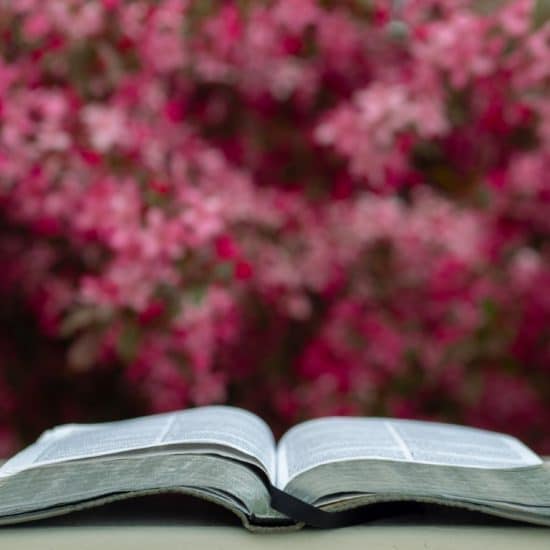 Our need for direction
Our need for direction
Bible Studies for Life: March 13, 2016
Scripture: John 8:12-19
 John HowellThe material for our lesson today is based upon chapters seven and eight of the gospel of John and our basic text is John 8:12-19. Both sections are set in the Jerusalem Temple (7:14-28; 8:20, 59). The time is the Feast of Tabernacles where water and light were significant reminders for the Jews of the time God provided direction for them when they were leaving Egypt for a new freedom in the promised land. The scripture declares that “the Lord was going before them in a pillar of cloud by day to lead them on the way and in a pillar of fire by night to give them light, that they might travel by day and by night” (Exodus 13:21).
John HowellThe material for our lesson today is based upon chapters seven and eight of the gospel of John and our basic text is John 8:12-19. Both sections are set in the Jerusalem Temple (7:14-28; 8:20, 59). The time is the Feast of Tabernacles where water and light were significant reminders for the Jews of the time God provided direction for them when they were leaving Egypt for a new freedom in the promised land. The scripture declares that “the Lord was going before them in a pillar of cloud by day to lead them on the way and in a pillar of fire by night to give them light, that they might travel by day and by night” (Exodus 13:21).
The Feast of Tabernacles, also called the Feast of Booths, celebrated the harvest and ingathering of agricultural produce as well as remembrance of the journey of the Israelites when they lived in booths. In chapters seven and eight of John, Jesus is teaching during or around the Feast of the Tabernacles. “But when it was now the midst of the feast, Jesus went up into the temple and began to teach” (John 7:14).
The Light of the World will guide us from the darkness of sin (John 8:12). On the last day of the feast, Jesus cried out, “If any man is thirsty, let him come to me and drink” (John 7:57). Then again Jesus spoke to the crowd at the feast, “I am the light of the world; he who follows me shall not walk in darkness, but shall have the light of life” John 8:12-13).
Scholars generally believe that Jesus’ affirmation as “the Light of the World” was stimulated by the lighting of lamps near the Court of the Women in the Temple. Greville Cooke dramatically describes this highlight of the feast:
“At a signal from a watcher,…the chief celebrant, a long taper in his hand…. And lifting high his taper the ministrant touches first the central lamp of the northernmost candelabrum, proceeding then to light the other six lamps that lay on either side, thence passes on to the southern candelabrum and lights that in similar fashion. Later the Levites and the people light their lamps which was followed by much dancing an waving of torches until the entire Temple complex abounded in light” (The Light of the World, pp. 232, 233).
It was then that Jesus cried out, “I am the Light of the World.” His declaration comes out of Old Testament prophecy but extends to the world.
Poet Rolland W. Schloerb captures some of the power of the self-revelation of Jesus when he writes: “Thou Light of Ages, source of living truth, Shine into every groping, seeking mind; Let plodding age and pioneering youth, Each day some clearer, brighter pathway find” (“Thou Light of Ages,” Christ in Poetry, p. 274).
Matthew quotes an Old Testament designation of the darkness of sin, which Jesus comes to expose: “The people who were sitting in darkness saw a great light; and to those who were sitting in the land and shadow of death; upon them a light dawned’ (4:16). John picked up on this theme in the beginning of his gospel: “In Him was life and the life was the light of men. And the light shines in the darkness, and the darkness did not comprehend it” or, as Williams translates it, “the darkness has never overpowered it” (Williams New Testament, John 1:4).
Jesus’ testimony about himself is true and trustworthy (John 8:13-15). John R.W. Stott has an enlightening commentary on Jesus’ teaching under the title, “Jesus’ Self-Centered Teaching” (Quoted in Calvin Miller, The Book of Jesus, pp. 358-60). Stott declares, “The most striking feature of the teaching of Jesus is that he was constantly talking about himself which immediately sets him apart from the other great religious teachers of the world.” He uses the Greek term “I am” often — I am the bread of life; the light of the world; the resurrection and the life; the way, and the truth and the life; take my yoke upon you, and learn from me. Accepting this self-definition of Jesus Christ as true and trustworthy leads one along the appropriate pathways of life.
Jesus as the Light reveals the Father (John 8:16-19). I like Ruth Duck’s wording to “Arise, Your Light is Come:” “Arise, your light is come! The Spirit’s call obey; Show forth the glory of your God which shines on you today…. Arise, your light is come! The mountains break in song! Rise up like eagles on the wing, God’s power will make us strong!” (Hymn 83, Baptist Hymnal, 1991).
In our quest for direction in life, there is no greater help than adequate light to see the way. Jesus is the light in whom all may see where to walk and live. Also, just as we all need light to grow in health and strength, so Jesus declares himself to be the source of light that enables us to follow the pathways of truth, life and fulfillment.
In his closing argument with the Jewish leaders, Jesus supported his own self-testimony by declaring that God was also witness to who he was. However, since they could not see God, they were not willing to accept his testimony as valid. In our faith commitment to Christ, we do know him to be God as well as a witness to the Father.
John Howell is academic dean emeritus at Midwestern Baptist Theological Seminary in Kansas City, Mo.
Bible Studies for Life is a curriculum series from LifeWay Christian Resources.
The PDF download requires the free Acrobat Reader program. It can be downloaded and installed at https://get.adobe.com/reader.

